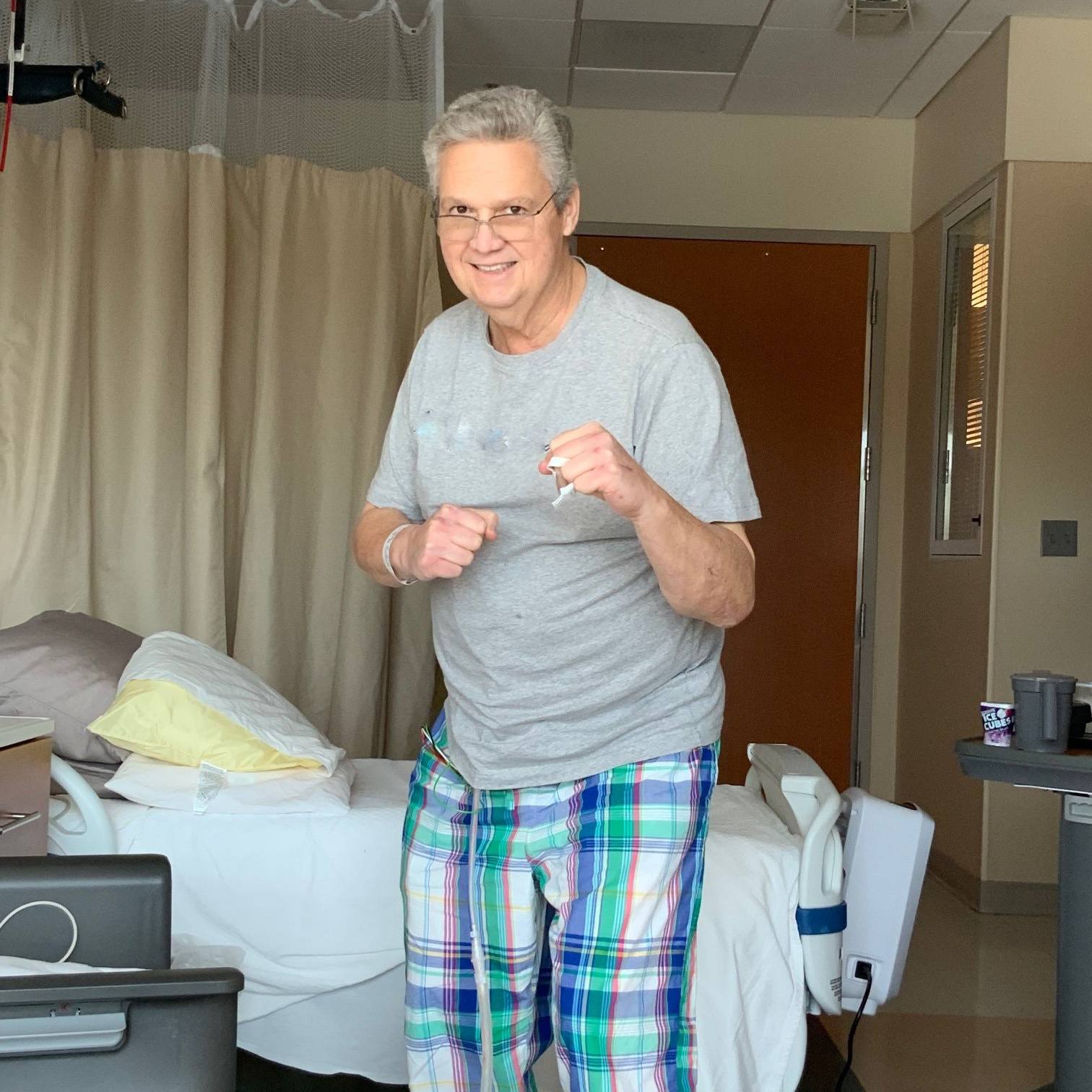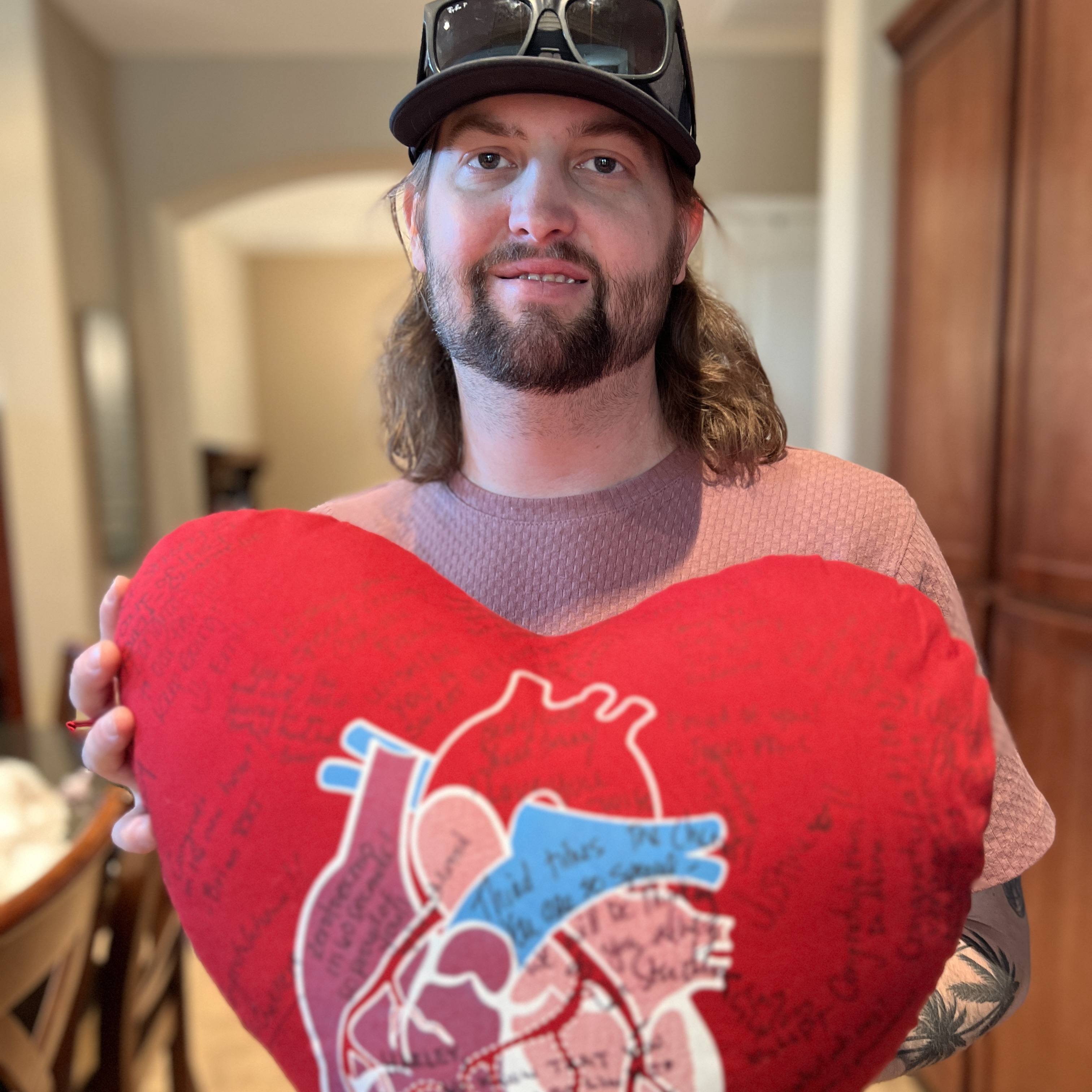While Walter "Junior" Boatright was running for a second term as Nassau county commissioner in northeast Florida in November 2012, he started to feel winded. At first, he chalked it up to getting older and just not having the same energy he used to, while campaigning 15 hours a day.
But after the campaign was over, and he had won the election, the Callahan, Florida, native says he was out of breath just walking out to the mailbox.
"It was like I had run down the road and back," Junior says. "I knew something wasn't right."
He would eventually learn it was his heart, not his age, that was slowing him down. And the answer would require more than determination and endurance. But first Junior had to find out what was wrong.
A damaged heart
He went to see his primary care physician, who ran some tests and recommended a cardiac catheterization to check if there were any blockages in Junior's heart. There weren't, but the procedure did show that his left ventricle was damaged, and fluid was building up.
Junior's ejection fraction, the percentage of blood the heart squeezes out with each contraction, was 19 percent — about one-third of what it should have been. He was diagnosed with congestive heart failure and told he would need a pacemaker defibrillator. At 54, Junior was shocked because he had always been in good health.
Doctors installed the pacemaker defibrillator in January 2013. They put Junior on medicines to help strengthen his heart and lower his blood pressure, along with a diuretic to reduce the fluid buildup. Two months later, Junior also had cardiac ablation to correct his heart rhythm.
"At that point my local cardiologist said, 'We can't do anything else for you. You're eventually going to have a transplant,'" Junior says.
"Many patients return to an active lifestyle and fully participate in their work and family activities after having an LVAD implanted." — Daniel Yip, M.D.
Junior then called Mayo Clinic and made an appointment with Jeffrey Hosenpud, M.D., a heart transplant surgeon at Mayo Clinic's Florida campus. Dr. Hosenpud did another cardiac catheterization and put Junior on another heart medication. After that, Dr. Hosenpud continued to monitor Junior, who stayed active in his role as county commissioner.
After two years, Junior's ejection fraction had not improved. In the summer of 2015, during a family vacation, he had a hard time getting up a flight of stairs. On his return, he went to see Dr. Hosenpud.
A third cardiac catheterization revealed the medicine was no longer working. Junior switched to an intravenous drug without success. It was time for a new option, and Dr. Hosenpud recommended that Junior get a left ventricular assist device, or LVAD.
A bridge to the future
The device is a mechanical heart pump that helps move blood from the lower chambers of the heart, the ventricles, to the rest of the body. LVADs are used in people who have weakened hearts or heart failure. The heart pumps may be recommended for people waiting for a heart transplant, and sometimes they can be a long-term treatment for heart failure.
An implanted left ventricular assistive device has several parts. A tube carries blood from the left ventricle of the heart to a pump. The pump delivers blood through another tube to the aorta — the artery that leads out of the heart — which then delivers blood to the body. A cable inserted through the skin connects the pump to a control unit and battery pack outside the body.
"I want people to know that your life isn't over just because you have congestive heart failure. You can still function and have a full and active life." — Junior Boatright
That fall, Junior announced he would not seek re-election for health reasons and met with Mayo Clinic cardiothoracic surgeon Kevin Landolfo, M.D., at the end of November. On Dec. 4, 2015, Dr. Landolfo implanted the heart pump. Two weeks later, Junior walked out of Mayo Clinic and began two months of cardiac rehabilitation.
Staying connected to his community was important to him, so during his recovery, Junior participated in county commission meetings online. Then, when he felt strong enough, he attended in person.
"Many patients return to an active lifestyle and fully participate in their work and family activities after having an LVAD implanted," says Daniel Yip, M.D., medical director for the Heart Failure and Transplant Program at Mayo Clinic's Florida campus.
A full and active life
In March, during a campaign event to fill the commission seat he was vacating at the end of his term, Junior was asked to run for Nassau County clerk of court.
"I talked it over with my wife and decided to run. It was fun going to the rallies, some of which would start and noon and go until 8 p.m.," says Junior. "All the while, the LVAD never got in the way of my campaigning."
Even though he didn't win that election, Junior is grateful to Mayo Clinic for making it possible for him to run and take on the demands of campaigning for months.
"Everyone from the doctors I met to the nurses in charge of my care to the people that came in and cleaned my room was just wonderful. They'll stop what they're doing to help you," Junior says. "Dr. Hosenpud is very easy to talk to. He answers any questions I have regardless of how crazy they may seem at the time."
Junior's name is still on the waiting list for a heart transplant. In the meantime, he stays busy and continues to do political consulting and lobbying. He also tries to share his medical experience whenever he can.
"I want people to know that your life isn't over just because you have congestive heart failure," Junior says. "You can still function and have a full and active life."
HELPFUL LINKS
- Learn more about heart failure and LVADs.
- Read about Mayo Clinic's Heart Failure Clinic.
- Explore Mayo Clinic's Florida campus.
- Request an appointment.








